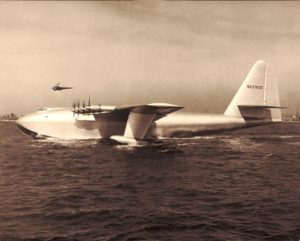Good morning, Whitewater.
Saturday in town will be sunny with a high of sixty-six. Sunrise is 7:35 AM and sunset 5:41 PM, for 10h 05m 19s of daytime. The moon is a waxing crescent with 28% of its visible disk illuminated.
On this day in 1862, Lincoln removes McClellan as commanding general of the Army of the Potomac:
On this day in 1862, a tortured relationship ends when President Abraham Lincoln removes General George B. McClellan from command of the Army of the Potomac. McClellan ably built the army in the early stages of the war but was a sluggish and paranoid field commander who seemed unable to muster the courage to aggressively engage Confederate General Robert E. Lee’s Army of Northern Virginia.
McClellan was a promising commander who served as a railroad president before the war. In the early stages of the conflict, troops under McClellan’s command scored several important victories in the struggle for western Virginia.
Lincoln summoned “Young Napoleon,” as some called the general, to Washington, d.C., to take control of the Army of the Potomac a few days after its humiliating defeat at the Battle of First Bull Run, Virginiain July 1861. Over the next nine months, McClellan capably built astrong army, drilling his troops and assembling an efficient command structure.
However, he also developed extreme contempt for the president, and often dismissed Lincoln’s suggestions out of hand. In 1862, McClellan led the army down Chesapeake Bay to the James Peninsula, southeast of the Confederate capital at Richmond, Virginia. During this campaign, he exhibited the timidity and sluggishness that later doomed him.
During the Seven Days Battles, McClellan was poised near Richmond but retreated when faced with a series of attacks by Lee. McClellan always believed that he was vastly outnumbered, though he actually had the numerical advantage. He spent the rest of the summer camped on the peninsula while Lincoln began moving much of his command to General John Pope’s Army of Virginia.
After Lee defeated Pope at the Second Battle of Bull Run in late August, 1862he invaded Maryland. With the Confederates crashing into Union territory, Lincoln had no choice but to turn to McClellan to gather the reeling Yankee forces and stop Lee. On September 17, 1962, McClellan and Lee battled to a standstill along Antietam Creek near Sharpsburg, Maryland. Lee retreated back to Virginia and McClellan ignored Lincoln’surging to pursue him.
For six weeks, Lincoln and McClellan exchanged angry messages, but McClellan stubbornly refused to march after Lee. In late October, McClellan finally began moving across the Potomac in feeble pursuit of Lee, but he took nine days to complete the crossing. Lincoln had seen enough. Convinced that McClellan could never defeat Lee, Lincoln notified the general on November 5 of his removal. A few days later, Lincoln named General Ambrose Burnside to be the commander of the Army of the Potomac.
After his removal, McClellan battled with Lincoln once more–for the presidency in 1864. McClellan won the Democratic nomination but was easily defeated by his old boss.
On this day in 1912, Wisconsin voters (all male) reject a proposal to recognize a woman’s right to vote:
1912 – Women’s Suffrage Referendum
On this date Wisconsin voters (all male) considered a proposal to allow women to vote. When the referendum was over, Wisconsin men voted women’s suffrage down by a margin of 63 to 37 percent. The referendum’s defeat could be traced to multiple causes, but the two most widely cited reasons were schisms within the women’s movement itself and a perceived link between suffragists and temperance that antagonized many German American voters.
Although women were granted the vote in 1920 by the 19th Amendment to the U.S. Constitution, Wisconsin’s own constitution continued to define voters as male until 1934. [Source: Turning Points in Wisconsin History]


